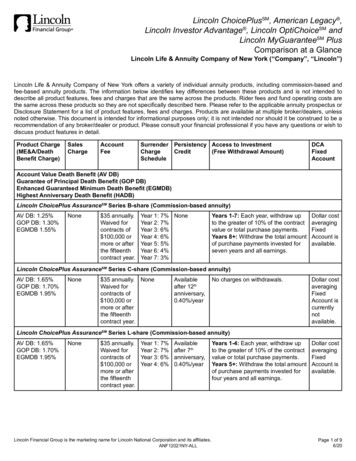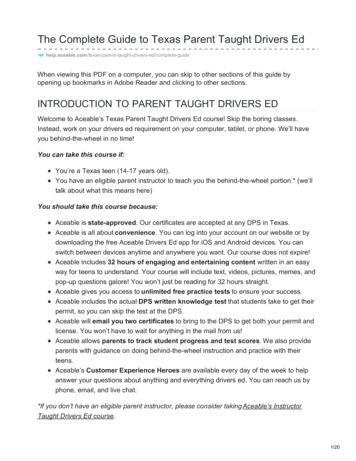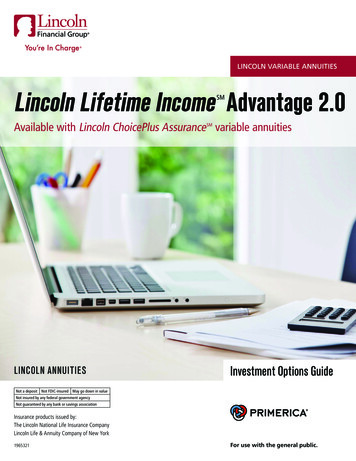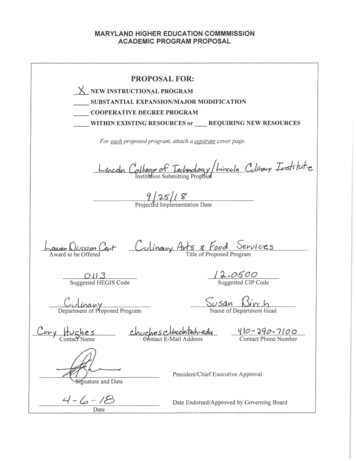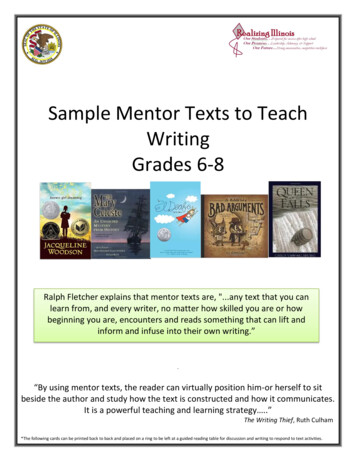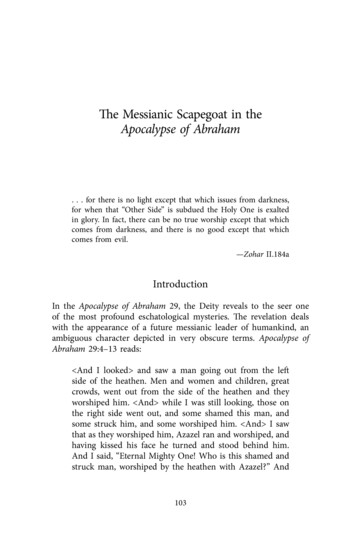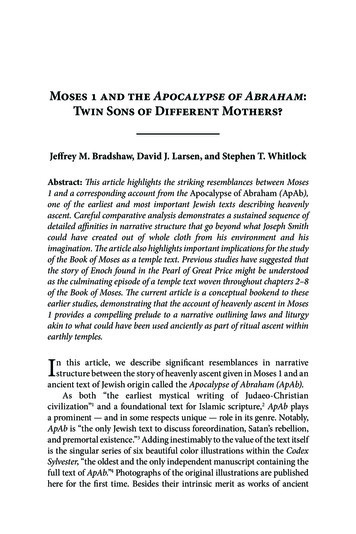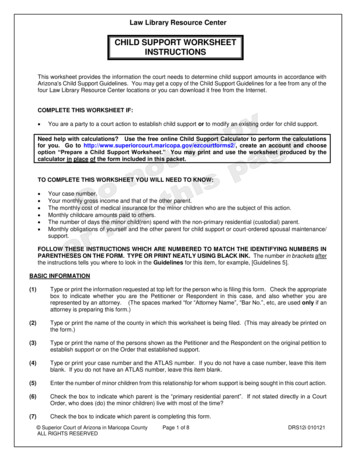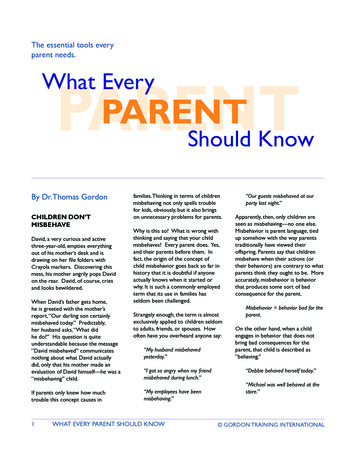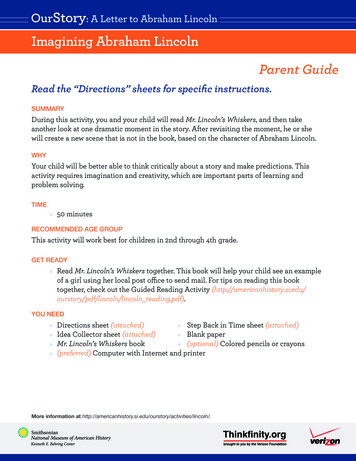
Transcription
OurStory: A Letter to Abraham LincolnImagining Abraham LincolnParent GuideRead the “Directions” sheets for specific instructions.SUMMARYDuring this activity, you and your child will read Mr. Lincoln’s Whiskers, and then takeanother look at one dramatic moment in the story. After revisiting the moment, he or shewill create a new scene that is not in the book, based on the character of Abraham Lincoln.WHYYour child will be better able to think critically about a story and make predictions. Thisactivity requires imagination and creativity, which are important parts of learning andproblem solving.TIME 50 minutesRECOMMENDED AGE GROUPThis activity will work best for children in 2nd through 4th grade.GET READY Read Mr. Lincoln’s Whiskers together. This book will help your child see an exampleof a girl using her local post office to send mail. For tips on reading this booktogether, check out the Guided Reading Activity n/lincoln reading.pdf).YOU NEED Directions sheet (attached)Step Back in Time sheet (attached)Idea Collector sheet (attached)Blank paperMr. Lincoln’s Whiskers book(optional) Colored pencils or crayons(preferred) Computer with Internet and printer More information at lincoln/.
OurStory: A Letter to Abraham LincolnImagining Abraham LincolnDirections, page 1 of 2For kids and adults to follow together.1. Be sure to read Mr. Lincoln’s Whiskers.2. After reading the book, turn back to the part where Grace gets a letter fromAbraham Lincoln. What happens? What does Grace say? What does she do? Howdo the other people in the story act?TipFor a closer look at the letter from Grace and the response from Lincoln,visit .3. During the story, Grace writes a letter to Abraham Lincoln and gets an answerseven days later. The readers don’t know for sure what happened during thoseseven days, like how Abraham Lincoln reacted to getting the letter from Grace.4. Use the Idea Collector Sheet to brainstorm what might have happened whenAbraham Lincoln got the letter from Grace in the mail. Make sure it fits in withwhat you know about Abraham Lincoln from the story and what happens in thestory. (Abraham Lincoln writes a letter back to Grace and eventually followsGrace’s suggestion.)TipIf you want to make the words and actions in your comic very realistic, youmight want to do some more research. To get more information on Mr.Lincoln’s personality, visit the online exhibition of Abraham Lincoln: AnExtraordinary Life at http://americanhistory.si.edu/lincoln/.5. Take your best ideas and use them to make a comic strip showing what happened.You can either draw the comic by hand or, if you have a computer with Internet,
OurStory: A Letter to Abraham LincolnImagining Abraham LincolnDirections,page 2 of 2use Read Write Think’s Comic Creator es/comic/). Be sure to color in the most important characters and objectsin the comic.TipThe Comic Creator has general pictures, settings, and characters. You maywant to add more details or personalization by hand after you have printedyour comic.6. Share your comic with someone else who read the book and talk about the extrascene you added.For more activities about Abraham Lincoln and Mr. Lincoln’s Whiskers, ties/lincoln/).
OurStory: A Letter to Abraham LincolnImagining Abraham LincolnIdea CollectorThis idea seems.I think I’ll.What wouldLincoln do?What wouldLincoln think?Who else would be there?Do you think this girl is.What things would you see there?What wouldLincoln say?Abraham Lincoln, 1860, Leopold Grozelier, after Thomas Hicks, National Portrait Gallery, Smithsonian Institution
OurStory: A Letter to Abraham LincolnImagining Abraham LincolnStep Back in TimeFor more information, visit the National Museum of American History Web ies/lincoln/.Abraham Lincoln was the president of the UnitedStates of America from 1861 to 1865. As a child, hegrew up in a poor family and wasn’t able to spend muchtime in school because he had to work to help supporthis family. Abraham Lincoln is famous for leadingAmerica through the Civil War, freeing slaves, andgiving thoughtful speeches, like the GettysburgAddress. To find out more about Abraham Lincoln, n wore high top hats, likethis one. The last time he put iton was to go to Ford’s Theatreon April 14, 1865, the night hewas assassinated.Drawings, cartoons, and comics have been used to tell bothfunny and serious stories for a long time. During the 1850s,just before Abraham Lincoln was running for president,technology made it possible for newspapers to printcartoons. Cartoons, like this one about Abraham Lincoln,added simple and sometimes funny pictures to the newsstories that were written out in the pages of the newspapers.Do you like to read comics or watch cartoons on TV?“Passage Through Baltimore”Etching by Adalbert JohnVolck, 1863. [National PortraitGallery, Smithsonian Institution]Have you ever thought about making a comic yourself?Make a comic about a scene that is not written into thebook Mr. Lincoln’s Whiskers.
OurStory: A Letter to Abraham LincolnImagining Abraham LincolnFor Teachers, page 1 of 2Read the “Parent Guide” and “Directions” sheets for specificinstructions.OBJECTIVESThe students will be better able to: tell a story using words and pictures.read a historical fiction narrative with imagination.apply knowledge about Abraham Lincoln to create historical fiction.STUDENT PERFORMANCE CRITERIA Creates a logical series of events.Asks and responds appropriately to relevant questions.Plans a work of art (including written and visual content).Demonstrates an understanding of character.STANDARDSNCHS History StandardsK-4 Historical Thinking Standards1C: Establish temporal order in constructing their own historicalnarratives.2H: Draw upon the visual data presented in photographs, paintings, cartoons, andarchitectural drawings.3B: Compare and contrast differing sets of ideas.3C: Analyze historical fiction.4B: Obtain historical data.4D: Marshal needed information of the time and place.K–4 Historical Content Standards4C: The student understands historic figures who have exemplified values andprinciples of American democracy.4D: The student understands events that celebrate and exemplify fundamental valuesand principles of American democracy.More information at lincoln/.
OurStory: A Letter to Abraham LincolnImagining Abraham LincolnFor Teachers,page 2 of 221st-Century SkillsLearning and Innovation Skills Creativity and Innovation Critical Thinking and Problem SolvingInformation, Media, and Technology Skills ICT (Information, Communications, and Technology) LiteracyIRA/NCTE Language Arts Standards1.Students read a wide range of print and non-print texts to build an understanding oftexts, of themselves, and of the cultures of the United States and the world; toacquire new information; to respond to the needs and demands of society and theworkplace; and for personal fulfillment. Among these texts are fiction andnonfiction, classic and contemporary works.3.Students apply a wide range of strategies to comprehend, interpret, evaluate, andappreciate texts. They draw on their prior experience, their interactions with otherreaders and writers, their knowledge of word meaning and of other texts, their wordidentification strategies, and their understanding of textual features (e.g.,sound-letter correspondence, sentence structure, context, graphics).6. Students apply knowledge of language structure, language conventions (e.g.,spelling and punctuation), media techniques, figurative language, and genre tocreate, critique, and discuss print and non-print texts.8.Students use a variety of technological and information resources (e.g., libraries,databases, computer networks, video) to gather and synthesize information and tocreate and communicate knowledge.11. Students participate as knowledgeable, reflective, creative, and critical members of avariety of literacy communities.
OurStory: A Letter to Abraham Lincoln Imagining Abraham Lincoln Read the “Directions” sheets for specific instructions. SUMMARY During this activity, you and your child will read Mr. Lincoln’s Whiskers, and th
